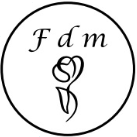There are three popular types of triangle patterns in the financial market. The first two are usually continuations while the final one is not because the price tends to break out in either direction. Once the temporary pause within the parallel lines is finished, traders can observe a downtrend which is a bear flag trend pattern. The flag pattern helps in pushing the price further down to help the bearish traders make profits. There can be various reasons for this; crypto markets are notoriously volatile, and surprises can occur at any stage — even within more established assets such as Bitcoin and Ethereum. External volatility triggers which upend the trend across crypto are also apt to distort signals previously given by continuation patterns.
The continuation pattern’s opposite is reversal patterns which signal price reversals in the price trend of a market rather than a continuation of the underlying trend. The first candlestick is a long downward candlestick counter to the prevailing trend, and the second one is upward. This suggests that the rally’s momentum may be slowing, but it is still likely to continue. The bullish gapping play provides traders with a strong signal that the bullish momentum is expected to continue.
Pros and Cons of Trading Crypto With Continuation Patterns
Opens and closes (bodies) of the middle three candles all occur within the body of the first candle. A final fifth candle is tall, white (unfilled), and closes above the body of the starting white candle. • A classic triangle has 5 waves, but if it has more waves the movement can be stronger after the breakout of the triangle formation. A pole height indicates a target price after the breakout of the pennant formation. That means that after the breakout of trend continuation patterns formation, the price will move the distance equal to the pole height.
- The psychology behind this pattern is that after a substantial downside, investors think the stock is oversold and undervalued, causing a small relief rally as some buyers come in.
- The strike candle should open lower than the close of the third candle and close above the open of the first candle.
- If the pattern continues in the same direction, you can hold onto the trades.
- The key is having a plan ready and not chasing every breakout seen on the chart.
- A descending triangle is a bearish continuation pattern that is created by joining lower highs and lower lows of the currency pair prices.
- Both flag and pennant patterns can be either ascending or descendant.
Join the stock market revolution.
Therefore, the theory suggests that a trader opens a buy trade after the last candle of the pattern (large bullish candle with a gap up) is formed. An ascending triangle forms when a financial asset is moving in a bullish trend. It then hits a major resistance level and then forms a diagonal pattern. The diagonal line forms when the price drops and reaches a key support, rises back to the original resistance, drops again to slightly above the first support, and vice versa. One of the trendlines is known as the flat upper trendline and another is the rising lower trendline. In this situation when the price moves in a certain continuation direction, traders look out for an opportunity for a breakout with ascending triangle trading.
Descending Triangle (Bearish)
Experience the next generation of investing with our cutting-edge platform, and join the thousands of clients who are already growing their wealth with confidence. Don’t leave your financial future to chance — partner with Ultima Markets, your ultimate gateway to trading success. Traders use the pattern as a signal to buy above the bullish second candle. They usually place a stop loss beneath the first bearish candle to protect the long position from retracement. Continuation candles are typically characterised by the price stabilising after a sharp move in either direction, although some, such as gaps, indicate that the move is accelerating. Here, however, it is important to note that different patterns can provide different signals depending on their position within the overall trend.
As they do this, some traders seek to enter new positions to take advantage of the original rally. These chart features thus need to be used in conjunction with reliable market indicators as part of a wider trading strategy. Relying on a given structure’s appearance on a chart is insufficient as a signal to enter or exit a trade. In addition, in some circumstances, an asset will not behave as expected — continuation patterns in and of themselves provide no guarantee of what will happen next. Price may break out of a triangle before its two sides meet, a place called the apex.
Cup and handles
- The consolidation period ends as soon as the currency pair prices break above the resistance level to continue the uptrend and provide traders with ideal entry signals in the market.
- They imply that market participants agree further movement will occur in the direction of the previous trend.
- Bullish wedges are an uptrend continuation pattern that is formed by lower lows and lower highs in the market.
- Furthermore, these patterns are adaptable across multiple time structures, permitting traders to use them in a variety of trading methods.
- Continuation patterns, as the name suggests, are chart patterns that indicate a temporary pause in a prevailing market trend before it eventually continues.
Most recently, the stock broke out above its previous all-time high of Rs 265, indicating strong bullish momentum. For traders, the entry point would be after the higher low is confirmed, with a stop loss placed below that low. One would aim to stay in the trade as long as the reversal holds, with trailing stop loss used to lock in profits as the new uptrend forms. Exits would be when the price hits target levels or if the stop loss is hit invalidating the pattern.
In the following we are going to cover the most important and most popular continuation patterns. The key for finding the best continuation pattern is the overall trend context in which the patterns occur. When you spot an ascending triangle, for example, you want it to form after a previous bullish trending phase. Most traders forget this important aspect and then run into problems with their pattern trading because they trade patterns in the wrong context.
Each pattern has its own unique characteristics and implications, providing traders with valuable clues about the future direction of prices. Familiarizing yourself with these patterns will ultimately enhance your ability to make accurate predictions and execute winning trades. Candlestick forex patterns offer visual explanations for market state and price movements, which help traders spot impending trend reversals. Forex candlestick patterns help traders analyse sentimental markets and predict future swings in prices based on past data. Flag patterns are continuation chart patterns that form in the financial markets and they include the bull flag pattern and the bear flag pattern.
Chart patterns should be used in conjunction with other analysis techniques such as volume, momentum indicators, and fundamentals for improved reliability. V bottom is found typically at the bottom of the chart and a V type price movement is seen. Traders find a high probability of a long setup at the retest of this neckline. Traders find the range of the V to be an appropriate target price after the trade entry. Gaps patterns refer to price gaps that occur on price charts when the opening or closing price differs significantly from the previous day’s close. Gap pattern’s structure is characterized by empty space on the price chart between the open or close, representing a sharp movement in price without trades occurring in the interim price range.
Bearish pennants can also be found during a cooling-off period within an overall downtrend. Here, price begins a relief move higher, with volatility and momentum gradually waning before a breakdown from the structure continues the prior trend. Hypothetical performance results have many inherent limitations, some of which are described below. No representation is made that any account will likely achieve profits or losses similar to those shown.
This pattern provides traders with the ideal signals to enter a trade. A bullish ‘Morning Star’ pattern shows strong buying resuming after a downtrend, signaling a potential bottom. A bearish ‘Evening Star’ pattern indicates selling pressure emerging after an uptrend, signaling a potential top.
For example, we have the «Three Black Crows» signal formed, which means that the price with a high probability will continue to move downward. Correspondingly, a trader who trades on M10 opens a sale every time the price corrects upwards on this timeframe, knowing that the main direction is bearish. The main benefit of chart patterns is that they provide a visual representation of past price action, which offers insight into potential future price movement.

